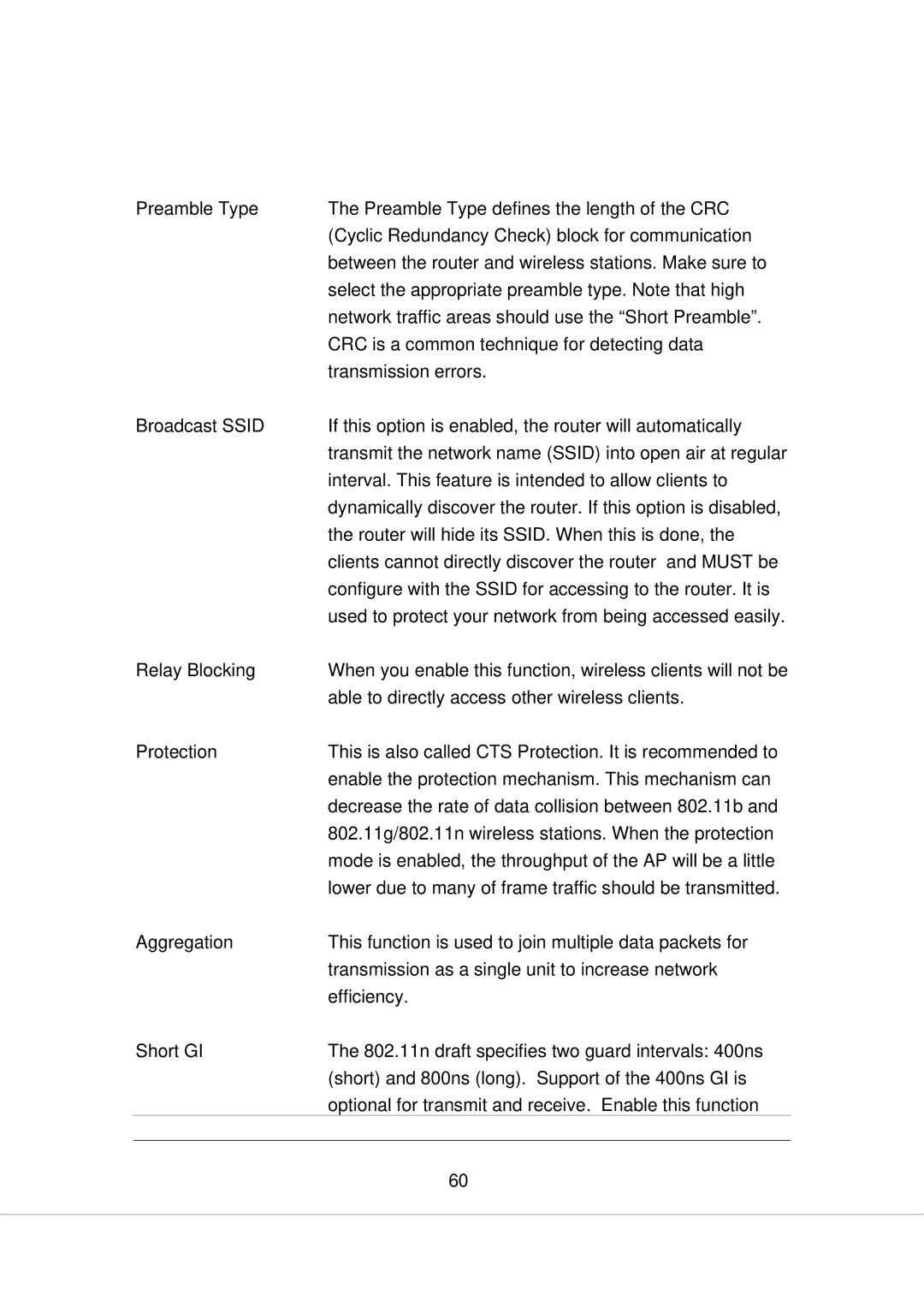| Preamble Type | The Preamble Type defines the length of the CRC |
|
|
| (Cyclic Redundancy Check) block for communication |
|
|
| between the router and wireless stations. Make sure to |
|
|
| select the appropriate preamble type. Note that high |
|
|
| network traffic areas should use the “Short Preamble”. |
|
|
| CRC is a common technique for detecting data |
|
|
| transmission errors. |
|
| Broadcast SSID | If this option is enabled, the router will automatically |
|
|
| transmit the network name (SSID) into open air at regular |
|
|
| interval. This feature is intended to allow clients to |
|
|
| dynamically discover the router. If this option is disabled, |
|
|
| the router will hide its SSID. When this is done, the |
|
|
| clients cannot directly discover the router and MUST be |
|
|
| configure with the SSID for accessing to the router. It is |
|
|
| used to protect your network from being accessed easily. |
|
| Relay Blocking | When you enable this function, wireless clients will not be |
|
|
| able to directly access other wireless clients. |
|
| Protection | This is also called CTS Protection. It is recommended to |
|
|
| enable the protection mechanism. This mechanism can |
|
|
| decrease the rate of data collision between 802.11b and |
|
|
| 802.11g/802.11n wireless stations. When the protection |
|
|
| mode is enabled, the throughput of the AP will be a little |
|
|
| lower due to many of frame traffic should be transmitted. |
|
| Aggregation | This function is used to join multiple data packets for |
|
|
| transmission as a single unit to increase network |
|
|
| efficiency. |
|
| Short GI | The 802.11n draft specifies two guard intervals: 400ns |
|
|
| (short) and 800ns (long). Support of the 400ns GI is |
|
|
| optional for transmit and receive. Enable this function |
|
|
|
|
|
|
| 60 |
|
|
|
|
|
Page 69
Image 69
